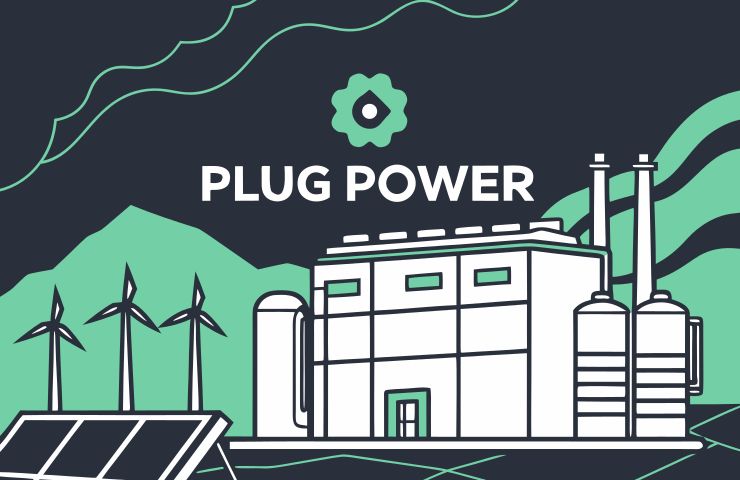
Plug Power Ignites US Green Hydrogen Growth with H2 Hollandia Electrolyzer
November 12, 2025Don’t call it hype—US green hydrogen is finally coming into its own, and Plug Power is right out front. Their freshly revealed H2 Hollandia project is all about dropping in their signature electrolyzer, and by doing that they’re spotlighting a nationwide surge that’s been quietly building steam.
Snapshot
Here’s the scoop: H2 Hollandia is the latest green hydrogen facility on the block, and Plug Power is set to supply the electrolyzer at its core. Beyond that, project specifics—where it’ll live, how big it’ll be or who’s lining up to take the fuel—are still under wraps, and you won’t find it in any federal listings just yet. But the timing couldn’t be sharper: investors have already pumped more than $36 billion into 76 major green hydrogen projects slated to kick off between 2025 and 2027. This isn’t just about cleaner molecules; it’s a strategic play to slash emissions at steel mills, cement works and chemical plants, while powering zero-emission trucking and shipping routes that batteries can’t handle. Even railroads and airlines are running pilots to see if hydrogen’s range really lives up to the hype. Put it all together—policy tailwinds, hefty tax credits and equipment prices trending downward—and you’ve got an investment stampede. Of course, a 14% tariff on imported electrolyzers has nudged prices up a bit, but the overall momentum is undeniable.
US Hydrogen Playbook: A Brief History
It wasn’t that long ago when America’s hydrogen narrative was all about gray hydrogen—steam methane reforming hooked to fossil fuel feedstocks. Enter the 2023 National Hydrogen Strategy, which rewrote the rulebook: scale electrolysis into the gigawatt realm by 2030, nail down 100% clean electricity by 2035, and chase net-zero emissions by 2050. Fast-forward to today and coastal hubs from California to New York, plus energy corridors in Texas and Louisiana, are jockeying for the top spot. Everyone—from big utilities and oil majors to scrappy startups—is sketching out project plans, eyeing what could become a massive, multi-hundred-million-ton annual industry.
Tech Spotlight: Electrolyzer at the Core
At the heart of H2 Hollandia sits the Plug Power Electrolyzer, a modular, stackable unit that uses wind, solar or any renewable juice to split H₂O into hydrogen and oxygen, all with zero carbon emissions. Think plug-and-play megawatt blocks that can snap together into dozens—or even hundreds—of megawatts. They pair seamlessly with variable renewables, courtesy of real-time digital controls that smooth out production. And yes, these stacks hit ISO 14687 purity standards, which is a big deal if you’re feeding sensitive fuel cells. Built-in remote monitoring and predictive maintenance keep uptime high and surprise costs low. Bottom line? These electrolyzer modules are the backbone of any serious hydrogen production outfit—whether you’re making ammonia for fertilizer, cleaning up refinery processes or powering fuel cell technology on the road.
Market & Policy Angle
This isn’t a one-company show. Thanks to the Inflation Reduction Act, the 45V tax credit can shave as much as $3 off the cost of every kilogram of green hydrogen, speeding up project paybacks. Meanwhile, DOE’s clean hydrogen hubs program—backed by multi-billion-dollar grants—is weaving together regional ecosystems for production, storage and offtake. States are revising regulations to champion industrial decarbonization: think preferential electricity rates, renewable portfolio carve-outs and public-private offtake deals with ammonia makers and heavy industries. On top of that, corporate ESG targets are spawning green hydrogen power purchase agreements, which lock in future demand. It’s no surprise that private capital—from infrastructure funds to legacy energy players—is circling like hawks, eyeing what could be a $200 billion global market by 2030.
Challenges on the Horizon
Don’t get carried away by the fanfare: green hydrogen still carries a premium—around $3–$6 per kilogram versus $1.50–$2 for gray hydrogen. Lining up financing for these capex-heavy installations in an era of rising interest rates can be a headache, and banks usually want to see solid long-term offtake agreements before they sign on. Add to that concerns over grid reliability and water supply—a 10 MW electrolyzer can guzzle roughly 4,000 MWh and millions of gallons of water per year—and you’re looking at real infrastructure hurdles unless you invest in grid upgrades and water-reuse systems. Then there’s the fact that pipelines, compression hubs and dedicated trucking fleets—key pieces of any robust hydrogen infrastructure—are still in their infancy, meaning parallel build-outs that drive up complexity and cost.
Community & Collateral Impact
Building a giant electrolyzer isn’t just about dropping equipment on a site. You’re fueling a local supply chain: construction crews, long-term engineering gigs, maintenance contracts and consulting work. Host regions see a surge in tax revenue and economic activity, which is a boon for rural and industrial communities. Over the lifespan of a 100 MW installation, you could offset more than a million tonnes of CO₂, pushing municipalities closer to their climate goals. Of course, environmental reviews will dig into water withdrawals—especially in drought-prone areas—along with grid stability and land-use debates. Winning over local stakeholders will be just as critical as nailing every technical detail.
Our Take
Plug Power jumping into H2 Hollandia—even with a few unknowns—feels like a bold play. What was once buzz is crystallizing into billions in committed capital. Policy incentives have laid out the runway; now the trick is delivering on cost control, execution and real market development. We’re betting the frontrunners will be those who can package hydrogen as a full-service offering—equipment, hydrogen production, hydrogen infrastructure, logistics and secure offtake all rolled into a bankable deal. Smaller, unproven tech vendors may find themselves edged out as customers demand reliability and scale.
Ready or not, green hydrogen is stepping into the energy spotlight. Plug Power’s H2 Hollandia playbook is a prime example of a gutsy, strategically timed move. The questions now are: will the policy tailwinds keep blowing? Can costs keep sliding? That’s when the real race gets going.


 With over 15 years of reporting hydrogen news, we are your premier source for the latest updates and insights in hydrogen and renewable energy.
With over 15 years of reporting hydrogen news, we are your premier source for the latest updates and insights in hydrogen and renewable energy.